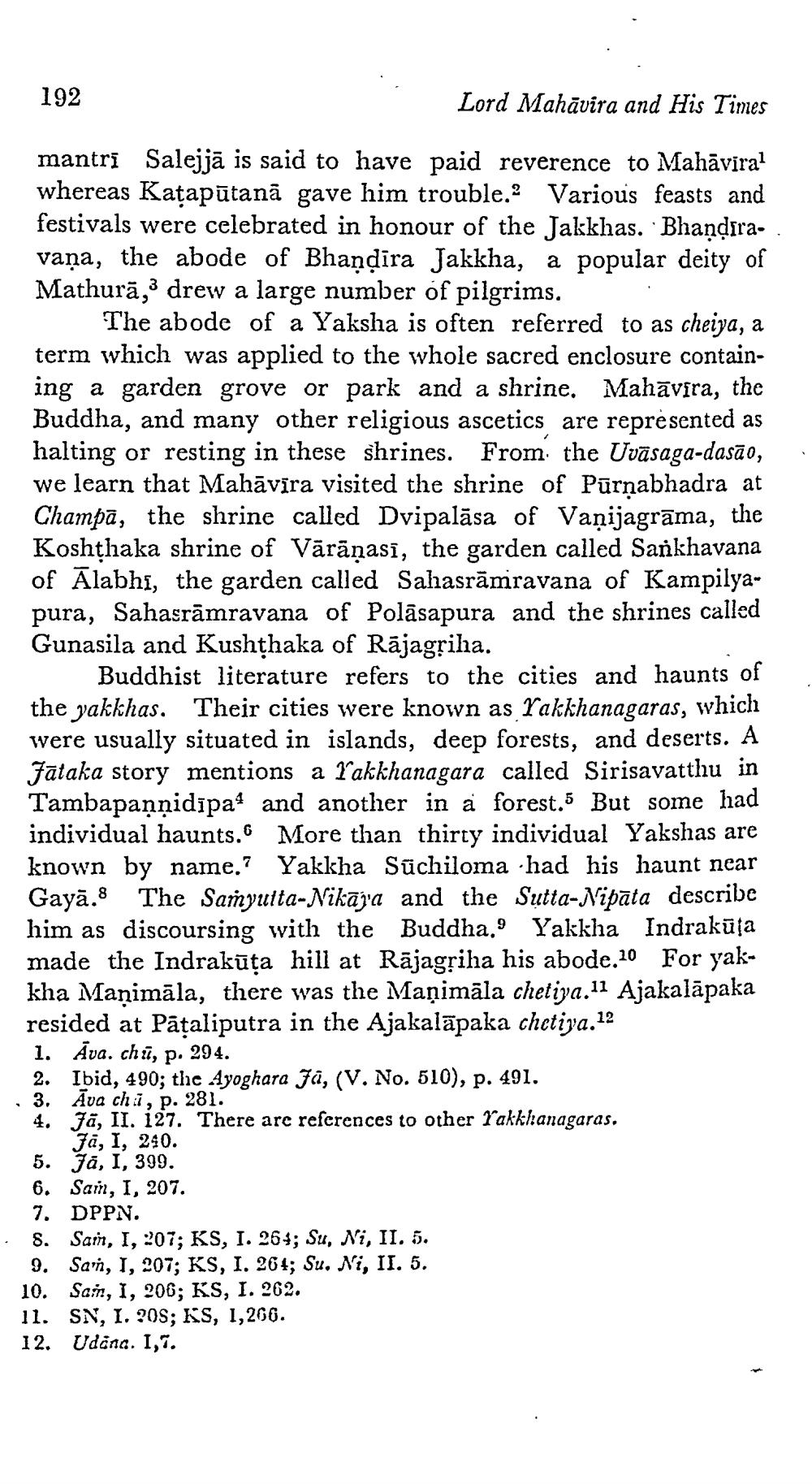________________
192
Lord Mahāvira and His Times
mantri Salejjā is said to have paid reverence to Mahāviral whereas Katapūtanā gave him trouble. Various feasts and festivals were celebrated in honour of the Jakkhas. Bhandira. vaņa, the abode of Bhandira Jakkha, a popular deity of Mathurā,3 drew a large number of pilgrims.
The abode of a Yaksha is often referred to as cheiya, a term which was applied to the whole sacred enclosure containing a garden grove or park and a shrine. Mahāvíra, the Buddha, and many other religious ascetics are represented as halting or resting in these shrines. From the Uvāsaga-dasão, we learn that Mahāvīra visited the shrine of Pūrnabhadra at Champā, the shrine called Dvipalāsa of Vanijagrāma, the Koshthaka shrine of Vārāṇasī, the garden called Sankhavana of Alabhi, the garden called Sahasrāmravana of Kampilyapura, Sahasrāmravana of Polāsapura and the shrines called Gunasila and Kushthaka of Rājagriha.
Buddhist literature refers to the cities and haunts of the yakkhas. Their cities were known as Yakkhanagaras, which were usually situated in islands, deep forests, and deserts. A Jātaka story mentions a l'akkhanagara called Sirisavatthu in Tambapannidīpat and another in a forest.5 But some had individual haunts. More than thirty individual Yakshas are known by name. Yakkha Süchiloma had his haunt near Gayā.8 The Samyutta-Nikāya and the Sutta-Nipāta describe him as discoursing with the Buddha.' Yakkha Indrakūta made the Indrakūta hill at Rājagriha his abode.10 For yakkha Manimāla, there was the Maņimāla chetiya. 11 Ajakalāpaka resided at Pataliputra in the Ajakalāpaka chetiya.12 1. Âua. cha, p. 294. 2. Ibid, 490; the Ayoghara Jā, (V. No. 510), p. 491. 3. Ava chii, p. 281.
Jā, II. 127. There are references to other rakkhanagaras.
Ja, I, 240. 5. Jā, I, 399. 6. Sam, I, 207.
7. DPPN. · 8. Sam, 1,207; KS, I. 264; Su, Ni, II. 5.
9. Sarn, 1, 207; KS, I. 26 4; Su. Ni, II. 5. 10. San, I, 206; KS, I. 262. 11. SN, 1. 20S; KS, 1,266. 12. Udang. 1,7.




